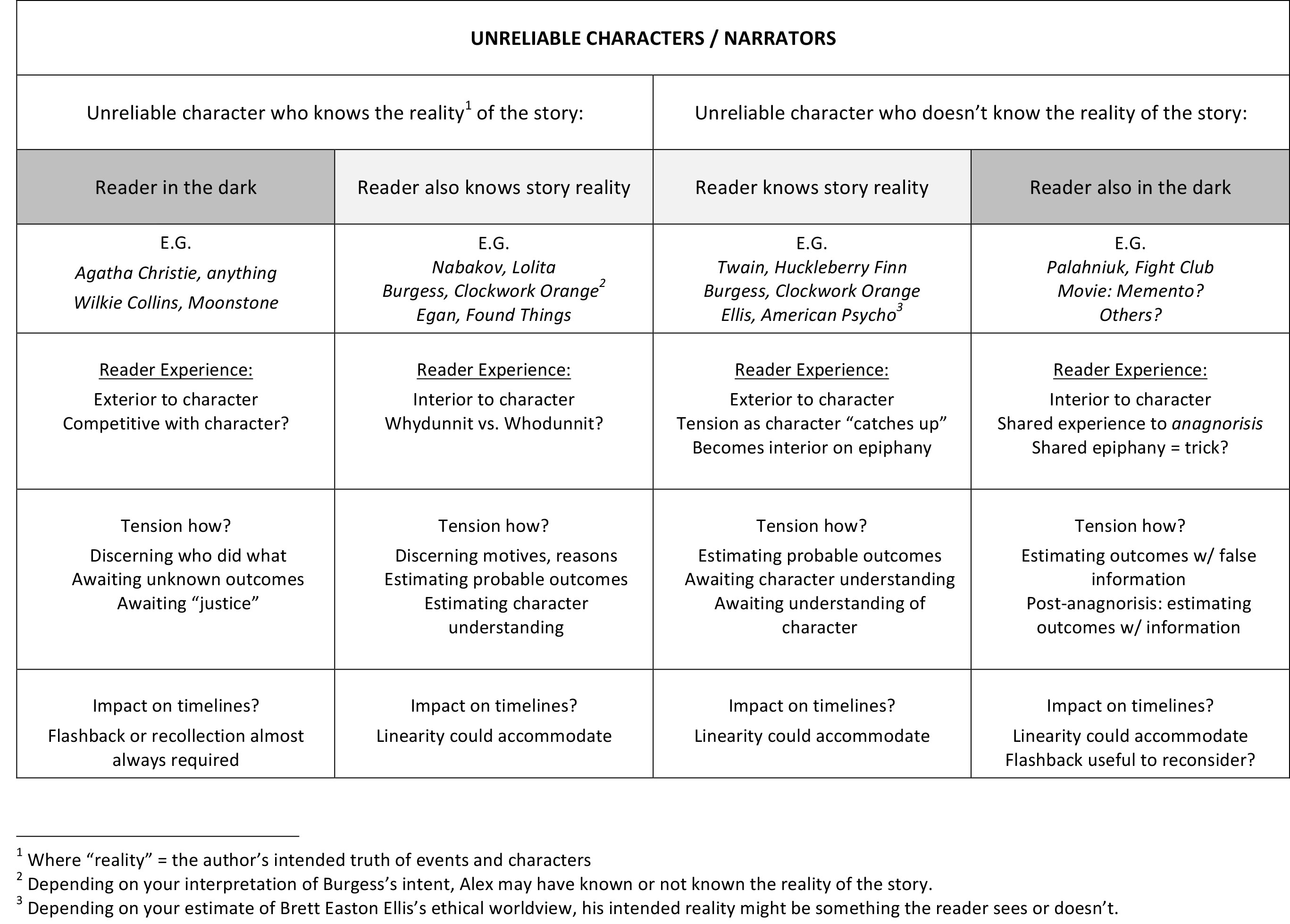
I get asked about unreliable characters a lot, a device that’s been used extensively in storytelling through the ages. Twentieth-century novels like Lolita, Fight Club and Life of Pi come to mind.
Maybe my students are extra interested in unreliability these days because of what’s happening in politics. I can’t say for sure.
But the area has been studied. You can find a section on unreliable narrators in that copy of Booth’s 1961 book The Rhetoric of Fiction which is probably sitting on the shelf right over your left shoulder.
Another good book on the topic was written by William Riggan in 1982 called Picaros, Madmen, Naifs and Clowns: The Unreliable First Person Narrator. Picaros boast. Madmen are deluded. Clowns don’t take anything seriously. And Naifs just don’t get what’s going on.
Riggan also wrote about Liars, who of course do what liars do. Which raises the topic of politicians again. But let’s just not go there…
Let’s just talk instead about how we can approach unreliability in our thinking as writers. And with that in mind, I’ve attached my own taxonomy of these character types (simpler than Riggan’s) based on two variables:
- The degree to which the character knows the reality of the story, which is to say the spectrum at the opposite ends of which live the naif and the liar;
- The degree to which the readers is aware of that same reality, which is the difference between a story that surprises you at some point with the unreliability of the narrator, and those stories which you read seeing that unreliability all along.
Those two variables give rise to four archetypic reading experiences which I’ve sketched into the following table with some examples in each case.
I hope this is helpful.


